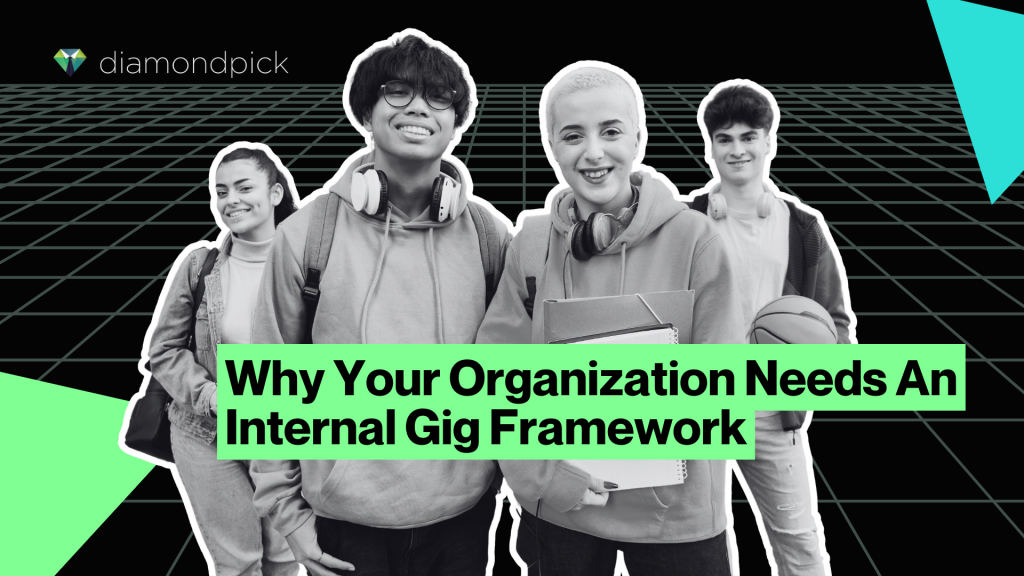
Internal gigs aren’t just short-term projects; they’re transformative opportunities for employees to grow within their organization. Employees want to explore new roles, and internal gigs provide that platform. Companies are prioritizing internal mobility, tapping into existing talent rather than seeking external hires. Internal Paid Gigs promote ‘Coopetition’ – where companies become competitors and collaborators; and this can reshape industry dynamics fostering a collaborative ecosystem.
The Power of Internal Paid Gigs
Internal paid gigs are short-term projects within a company, redefining how employees engage with their roles. Unlike hiring freelancers or contract workers, these gigs involve engaging existing employees who allocate their unutilized time to remain productive and remunerated. Internal gigs represent a powerful avenue for employees to develop new skills, broaden networks, and explore new roles, and for organizations to enhance internal mobility, employee retention, and to cultivate a dynamic, adaptable workforce.
While some companies are piloting this innovative approach, there remains a cautious sentiment in fully embracing internal paid gigs due to integrity issues and complexities from the past. Today, there is a sizable untapped potential that remains unutilized. Should organizations maintain this existing level of inefficiency, or should they leverage this untapped potential within the existing workforce?
Internal gigs can offset the attrition cycle in a job market with limited avenues for salary growth. Offering meaningful gigs acknowledges and supports employees, fostering reciprocity and improving overall earning potential.
Maximizing Workforce Potential
In the current landscape, employment models are traditionally limited to being an employee or a contractor. Imagine a worker who utilizes only 60% of their time; organizations can tap into the remaining 40%. The increasing adoption of automation and AI is also displacing routine work, further increasing the gap of unutilized time that can be tapped for continued success.
Internal paid gigs, fully governed by appropriate guidelines and compensation, will foster an environment where employees can grow, learn, and earn more. Organizations benefit from better retention rates and savings on the high costs of external hires.
From Learning to Earning: The Value of Internal Paid Gigs
Internal gigs serve as a preliminary stage for employees to explore and embrace new responsibilities, fostering a culture of continuous learning within the organization.
Enthusiasm for learning new skills increases when the knowledge acquired can be applied and monetized. With internal paid gigs, employees can explore new avenues and apply their learning in an organizational context. They can leverage internal gigs to upskill, test newly acquired skills, and ensure they align with interests and capabilities, ultimately contributing to the organization’s growth and competitiveness.
Internal paid gigs fuel employee development and serve as a dynamic platform for skilling initiatives, ensuring that employees continually upskill and refine their capabilities within the supportive framework of the organization.
The introduction of internal paid gigs becomes a transformative step in reshaping the employee experience, giving employees tangible, hands-on opportunities to explore and enhance new skills. Beyond its cost-effectiveness, this approach serves as a catalyst for significant improvements in employee retention, eliminating the need for external talent and fostering a culture of internal growth and development within organizations.
To overcome employee disengagement, organizations need to help their people improve their skills while ensuring those skills fill critical gaps within the organization.
Preparing Organizations for Change
The success of internal paid gigs revolves around identifying the right engagements, assessing eligibility criteria for these jobs, and determining appropriate time and compensation for these gigs.
Establishing a dedicated internal platform equipped with a robust system for tracking and managing internal gigs is imperative. This not only ensures transparency, efficiency, and adherence to established guidelines but also leverages technology-enabled, task-based platforms to streamline processes, monitor approvals, and optimize time management. It can help
- Identify potential internal engagements by evaluating ongoing projects, identifying areas with surplus capacity, and recognizing tasks suitable for additional workforce engagement.
- Set Eligibility Criteria according to skill sets, experience levels, and availability.
- Determine Compensation aligned with the complexity, significance of the task, market rates, employee skill level, and anticipated time commitment.
Making Way for Internal Paid Gigs with Efficient Workforce Management
With the emergence of internal gigs, organizations can embrace new paradigms in workforce management.
1. Unlocking Workforce Potential: To maximize benefits from the existing workforce, organizations must explore avenues for providing additional earning opportunities. This approach utilizes idle capacity within the workforce, potentially saving costs that would have been allocated to external contractors.
Even a conservative estimate, such as 20% of idle capacity in a workforce of 40,000, translates to 8,000 individuals worth of excess capacity. Even a 50% utilization of this capacity will result in retaining 4,000 employees, reducing the need for external hires.
2. Enhancing Retention: By leveraging in-house opportunities, organizations can significantly improve employee retention, eliminating the constant search for external avenues and promoting a culture of internal growth and development.
Retaining a skilled workforce becomes more feasible when individuals can explore varied roles within the organization.
3. Optimizing Bench Strength: Rather than facing potential attrition, organizations can explore options to expose workers on the bench to external opportunities for a defined period.
Internal paid gigs allow collaboration and competition simultaneously, allowing employees to contribute to other organizations without compromising proprietary advantages.
4. Encouraging Industry Collaboration: Promoting the idea of “coopetition,” where companies become competitors and collaborators and can reshape industry dynamics. While product companies have mastered this approach, service-oriented organizations can also benefit from it. Encouraging employees to work for competitors temporarily, especially in non-IP-intensive projects, fosters a collaborative ecosystem within the industry.
Internal gigs help promote ‘Coepetition,’ where companies become competitors and collaborators, which can reshape industry dynamics.
5.Skills-based organization: To build a robust internal talent marketplace, organizations should focus on skills-based transformation. Encourage employees to actively develop and showcase their skills, creating comprehensive profiles. Using this data, establish a skills mapping system for precise project and opportunity matching. Prioritize skill development to foster internal mobility, optimize resource allocation, and cultivate innovation.
Embracing skills-based transformation unlocks untapped potential, ensuring adaptability and efficiency in the evolving talent landscape.
Organizations adapt to evolving market demands by embracing gigs and flexible staffing models. As internal paid gigs gain prominence, organizations will have access to a broader talent pool, specialized skills, and enhanced efficiency.

For more insights, strategies, and tools that will help organizations navigate the dynamic talent market read Diamondpick’s Talent Trends 2024 eBook. Download your copy today!
